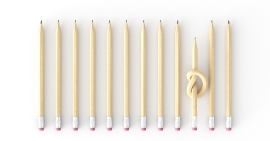The cheque: an old rock star who never dies
08/09/2022
Cheques are a means of payment used mainly to pay large amounts, such as in the purchase of a home, for example, but their use is becoming increasingly infrequent. In 2021, 24 million cheques with an average amount of €7,665 were processed, accounting for 0.95% of all transactions made through the National Electronic Clearing System (SNCE). This is a far cry from the almost 60 million cheques cashed in 2012.
This decline has been constant since before the introduction of the euro. As well as the unquestionable competition posed by cards, in recent years instant transfers have become added competition for smaller cheques. This is why the average amount per transaction is increasing. Despite all this, the cheque is still reluctant to leave us, as it has already done in other neighbouring countries. According to the payment statistics published by the ECB, in a total of 15 EU countries its use is token or non-existent. France is the country where cheques are most widely used, albeit with a notable decline, followed far behind by Italy, Portugal, Spain and Ireland.
Normally, you will not use a cheque to pay a small amount, while for large amounts, there are other alternatives. Firstly, ordinary transfers, which have no limits other than the operational limits imposed by each bank; in any case, the money arrives no later than the next working day after the day on which the receiving bank receives the funds. In the case of urgent or "OMF" transfers (via the Banco de España), the funds are received the same day. Lastly, there are instant transfers in which the amount reaches its destination in less than ten seconds, albeit with a limit of €100,000.
At least in Spain, it is still too early to "retire" this veteran means of payment. So we recommend that you consult our section devoted to cheques when you want to use them with full guarantees.



